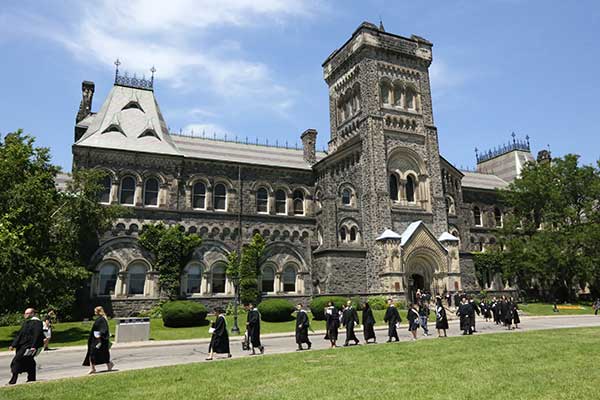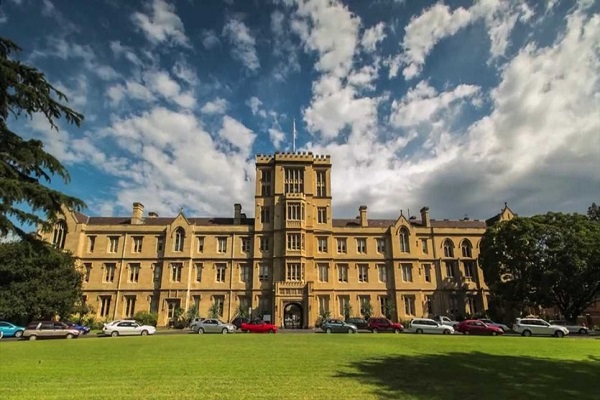1. Introduction
Studying abroad is a transformative experience that can broaden your horizons, enhance your education, and open up new career opportunities. As globalization continues to influence various sectors, the demand for international education has grown significantly. This article provides a comprehensive guide to some of the best universities to study abroad, highlighting key factors to consider when making your decision and offering insights into the top institutions across different regions.
2. Factors to Consider When Choosing a University Abroad
Choosing the right university for your study abroad experience is crucial for your academic success and personal growth. Here are some important factors to consider:
Academic Reputation: Look for universities with strong academic programs in your field of study. Rankings and faculty expertise are important indicators of a university’s reputation.
Cost of Living and Tuition Fees: Studying abroad can be expensive, so it’s essential to factor in the cost of living, including accommodation, food, transportation, and other daily expenses. Tuition fees vary significantly between countries and universities, so research thoroughly to find an option that fits your budget.
Cultural Experience: The cultural environment of your chosen destination plays a significant role in your overall experience. Consider the country’s language, traditions, social norms, and lifestyle to ensure it aligns with your preferences.
Language of Instruction: Ensure that the courses are offered in a language you are proficient in. Some universities offer programs in English even in non-English speaking countries, which can be beneficial if you’re not fluent in the local language.
Availability of Scholarships: Scholarships can significantly reduce the financial burden of studying abroad. Research the availability of scholarships for international students at your preferred universities and explore government or private funding options.
3. Top Universities in the United States

The United States is a leading destination for international students, offering a wide range of prestigious universities.
Harvard University: Harvard is renowned for its excellence in various fields, including law, medicine, business, and the humanities. With a rich history and a strong alumni network, it remains a top choice for students worldwide.
Stanford University: Located in the heart of Silicon Valley, Stanford is a hub for innovation and entrepreneurship. Its programs in engineering, computer science, and business are highly regarded globally.
Massachusetts Institute of Technology (MIT): MIT is synonymous with cutting-edge research and technological advancements. It offers world-class programs in engineering, computer science, and the sciences.
University of California, Berkeley: UC Berkeley is known for its strong research programs, particularly in the sciences, engineering, and social sciences. It has a diverse student body and a vibrant campus life.
Princeton University: Princeton is known for its focus on undergraduate education and its prestigious programs in the humanities, social sciences, and natural sciences.
4. Top Universities in the United Kingdom

The United Kingdom is home to some of the oldest and most prestigious universities in the world.
University of Oxford: Oxford is the oldest university in the English-speaking world, offering a rigorous academic environment and a rich tradition of excellence in various disciplines.
University of Cambridge: Cambridge is renowned for its emphasis on research and its strong programs in the sciences, humanities, and social sciences. Its historic campus and vibrant academic community make it a top choice for international students.
Imperial College London: Specializing in science, engineering, and medicine, Imperial College is a leading institution in these fields. It offers a dynamic and research-intensive environment.
London School of Economics and Political Science (LSE): LSE is a world leader in social sciences, offering top programs in economics, political science, and international relations.
University College London (UCL): UCL is a multidisciplinary university with strong programs in arts and humanities, social sciences, and engineering. It is known for its research output and global outlook.
5. Top Universities in Canada

Canada is a popular destination for international students due to its high quality of life, multicultural environment, and excellent education system.
University of Toronto: The University of Toronto is Canada’s top-ranked university, known for its research-intensive programs and diverse academic offerings. It has a vibrant campus life and is located in one of the world’s most multicultural cities.
McGill University: Located in Montreal, McGill is known for its strong research programs, particularly in medicine, engineering, and the sciences. It has a diverse student population and a strong international presence.
University of British Columbia (UBC): UBC is one of Canada’s leading research universities, with strong programs in environmental sciences, engineering, and business. Its stunning campus and vibrant city life make it a top choice for international students.
University of Alberta: Known for its research excellence in energy, environmental sciences, and engineering, the University of Alberta offers a wide range of programs and has a strong international student community.
University of Montreal: As one of Canada’s top French-language universities, the University of Montreal offers a diverse range of programs and is known for its research in health sciences, social sciences, and the humanities.
6. Top Universities in Australia

Australia is known for its high-quality education system, diverse cultural experiences, and beautiful landscapes.
University of Melbourne: The University of Melbourne is Australia’s top-ranked university, known for its research excellence and strong programs in law, medicine, and business.
Australian National University (ANU): ANU is a research-intensive university with a strong focus on international relations, politics, and science. It is located in Canberra, the capital city of Australia.
University of Sydney: The University of Sydney is one of Australia’s oldest and most prestigious universities, offering a wide range of programs and a vibrant campus life.
University of Queensland: Known for its strong programs in environmental sciences, business, and health sciences, the University of Queensland offers a diverse range of academic opportunities.
Monash University: Monash is a large, research-intensive university with campuses across Australia and overseas. It is known for its programs in engineering, business, and the sciences.
7. Top Universities in Europe (Non-UK)

Europe offers a diverse range of educational opportunities, with many universities offering programs in English.
ETH Zurich (Switzerland): ETH Zurich is one of the world’s leading universities in science and technology, known for its cutting-edge research and strong programs in engineering and the sciences.
University of Copenhagen (Denmark): The University of Copenhagen is a top-ranked university in Scandinavia, known for its research in health sciences, social sciences, and the humanities.
University of Amsterdam (Netherlands): The University of Amsterdam offers a wide range of programs in English and is known for its strong research output in social sciences, humanities, and business.
Ludwig Maximilian University of Munich (Germany): LMU Munich is one of Germany’s leading universities, offering strong programs in the sciences, humanities, and social sciences. It is known for its research excellence and international outlook.
Sorbonne University (France): Sorbonne University is one of France’s most prestigious universities, known for its strong programs in the humanities, social sciences, and natural sciences. It offers a rich cultural experience in the heart of Paris.
8. Top Universities in Asia

Asia is home to some of the fastest-growing economies and offers a range of world-class educational opportunities.
National University of Singapore (NUS): NUS is Asia’s top-ranked university, known for its strong programs in engineering, business, and the sciences. It has a diverse student population and a global outlook.
Tsinghua University (China): Tsinghua is one of China’s top universities, known for its excellence in engineering, technology, and the sciences. It has strong ties with industry and a vibrant campus life.
University of Tokyo (Japan): The University of Tokyo is Japan’s leading university, known for its strong research programs in the sciences, engineering, and social sciences. It offers a rich cultural experience and a strong academic environment.
Hong Kong University of Science and Technology (HKUST): HKUST is a leading university in Asia, known for its strong programs in science, engineering, and business. It has a diverse student body and a global outlook.
Seoul National University (SNU): SNU is South Korea’s top university, known for its strong programs in engineering, business, and the sciences. It offers a dynamic campus life and a strong international presence.
9. Top Universities in Latin America

Latin America offers a rich cultural experience and a range of educational opportunities.
Universidad de Buenos Aires (Argentina): UBA is one of the top universities in Latin America, known for its strong programs in the humanities, social sciences, and law. It has a vibrant campus life and a strong international presence.
Universidade de São Paulo (Brazil): USP is Brazil’s top university, known for its research excellence in various fields, including engineering, medicine, and the sciences. It has a diverse student population and a strong international presence.
Pontificia Universidad Católica de Chile: PUC is one of the top universities in Chile, known for its strong programs in the humanities, social sciences, and business. It offers a vibrant campus life and a rich cultural experience.
Universidad Nacional Autónoma de México (UNAM): UNAM is Mexico’s top university, known for its strong programs in the humanities, social sciences, and natural sciences. It has a diverse student population and a strong international presence.
Universidad de los Andes (Colombia): Universidad de los Andes is one of the top universities in Colombia, known for its strong programs in business, engineering, and the sciences. It offers a vibrant campus life and a strong international presence.
10. Student Life and Extracurricular Opportunities
Studying abroad is not just about academics; it’s also about experiencing life in a new country and making the most of your time there.
Campus Culture and Community: Explore the campus culture and community at your chosen university. Many universities offer a range of clubs, societies, and activities that cater to diverse interests.
Clubs and Societies: Joining clubs and societies is a great way to meet new people, explore new interests, and make the most of your time abroad. Whether you’re interested in sports, arts, or academics, there’s likely a club for you.
Sports and Recreational Activities: Many universities offer a range of sports and recreational activities, including intramural sports, fitness classes, and outdoor adventures. These activities are a great way to stay active and make new friends.
Internship and Job Opportunities: Many universities offer internship and job opportunities for international students, allowing you to gain valuable work experience and build your professional network.
11. Scholarships and Financial Aid for International Students
Financing your education abroad can be challenging, but there are many scholarships and financial aid options available.
Types of Scholarships: There are many different types of scholarships available for international students, including merit-based scholarships, need-based scholarships, and scholarships for specific fields of study.
Application Process: The application process for scholarships can be competitive, so it’s important to start early and submit a strong application. Be sure to research the requirements and deadlines for each scholarship you’re interested in.
Government and Private Funding Options: In addition to university scholarships, there are also government and private funding options available for international students. These can include grants, loans, and sponsorships.
12. Challenges of Studying Abroad
While studying abroad is an exciting opportunity, it also comes with its own set of challenges.
Homesickness and Cultural Adjustment: Being away from family and friends can be tough, especially in a new and unfamiliar environment. It’s important to stay connected with loved ones and build a support network at your new university.
Language Barriers: Studying in a new language can be challenging, but it’s also a great opportunity to improve your language skills. Many universities offer language support services to help international students succeed.
Financial Challenges: Studying abroad can be expensive, and it’s important to budget carefully and explore all available funding options. Be sure to research the cost of living in your destination country and plan accordingly.
Navigating Visa and Immigration Requirements: The visa and immigration process can be complex, so it’s important to start early and ensure you have all the necessary documentation. Be sure to research the requirements for your destination country and follow the guidelines carefully.
13. How to Prepare for Studying Abroad
Proper preparation is key to a successful study abroad experience.
Researching Universities and Programs: Start by researching universities and programs that align with your academic and personal goals. Consider factors like academic reputation, cost, location, and cultural fit.
Application Process: The application process for studying abroad can be competitive, so it’s important to start early and ensure you meet all deadlines. Be sure to prepare a strong application, including your academic transcripts, letters of recommendation, and personal statement.
Visa and Immigration Preparation: The visa and immigration process can be complex, so it’s important to start early and ensure you have all the necessary documentation. Be sure to research the requirements for your destination country and follow the guidelines carefully.
Health Insurance and Safety Precautions: It’s important to have adequate health insurance coverage while studying abroad. Be sure to research the options available in your destination country and choose a plan that meets your needs. Additionally, familiarize yourself with the safety guidelines and emergency procedures at your chosen university.
14. Future Outlook: Emerging Trends in Global Education
As the world continues to change, so too does the landscape of global education.
Increasing Demand for International Education: The demand for international education is expected to continue growing, with more students seeking opportunities to study abroad. This trend is driven by factors like globalization, technological advancements, and the desire for a more diverse and well-rounded education.
Digital and Hybrid Learning: The COVID-19 pandemic has accelerated the adoption of digital and hybrid learning models, which are likely to become more common in the future. This trend offers students greater flexibility and access to a wider range of educational opportunities.
The Impact of Geopolitical Changes on International Student Mobility: Geopolitical changes, such as shifts in immigration policies and international relations, can have a significant impact on international student mobility. It’s important for students to stay informed about these changes and consider their potential impact on their study abroad plans.
15. Conclusion
Studying abroad is a life-changing experience that offers students the opportunity to explore new cultures, gain a global perspective, and receive a world-class education. By carefully choosing the right university and preparing thoroughly, you can make the most of this incredible opportunity. Whether you’re interested in studying in the United States, the United Kingdom, Canada, Australia, Europe, Asia, or Latin America, there are many top universities to choose from. With the right preparation and mindset, you can achieve academic success and personal growth while studying abroad.
16. FAQs
What are the best times to apply for studying abroad?
The best time to apply for studying abroad is typically 12-18 months before your intended start date. This allows you enough time to research universities, prepare your application, and complete the visa and immigration process.
How can I choose the right university for me?
Consider factors like academic reputation, cost of living, cultural experience, language of instruction, and availability of scholarships. Research the universities and programs that align with your academic and personal goals.
Are there scholarships available for international students?
Yes, many universities offer scholarships specifically for international students. Additionally, there are government and private funding options available. Be sure to research the requirements and deadlines for each scholarship you’re interested in.
How do I deal with homesickness while studying abroad?
Homesickness is a common challenge for international students. Staying connected with loved ones, building a support network at your new university, and getting involved in campus activities can help you adjust to your new environment.
What should I know about visa and immigration processes?
The visa and immigration process can be complex, so it’s important to start early and ensure you have all the necessary documentation. Research the requirements for your destination country and follow the guidelines carefully.



